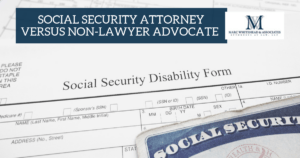The Social Security Disability system has changed its policy on a claimant’s ability to file a second or what is known as a “subsequent” disability application if they receive an unfavorable decision from the SSA. This change unfairly burdens a disabled claimant with a catch 22 decision, “Do I drop my appeal of the first application and lose back due benefits while filing a second (subsequent) application or do I wait for years appealing the first application?” This is a continuation of our blog post from earlier in the week.
The National Organization of Social Security Claims Representatives (NOSSCR) reports that the Social Security Administration will no longer process a subsequent (a second) disability claim if you already have a claim under the same title and of the same type pending at any level of review (initial, reconsideration, hearing or Appeals Council). Until now, it has been common place for claimant that received an unfavorable decision from an Administrative Law Judge to file 2nd application while their first application was stuck in the lengthy appellate process. This practice was often beneficial because the by the time of the second application, the disabled worker’s condition had gotten worse or they had aged up into a more favorable age bracket.
Call or text 800-562-9830 or complete a Free Case Evaluation form
Filing a New Disability Claim
A claimant who wants to file a new disability claim under the same title and of the same benefit type will have to choose between continuing with the administrative appeal or declining to pursue administrative review and filing a new application.
If the choice is to pursue the administrative appeal, SSA will not accept the subsequent application.
Additional evidence reporting a new medical condition or a worsening of existing medical conditions can still be submitted.
For a free legal consultation, call 800-562-9830
New Evidence On or Before a Hearing
If the claimant decides to pursue the first claim and it is pending at the Appeals Council and additional evidence is submitted, the Appeals Council will first determine if the evidence relates to the period on or before the date of the ALJ hearing decision. If it does relate to that period, the Appeals Council will consider it with the rest of the record.
If the new and material evidence relates to the period on or before the date of the hearing decision and “shows a critical or disabling condition,” the Appeals Council will expedite its review of your pending claim.
New Evidence After a Hearing
If the additional evidence relates to the period after the date of the ALJ decision, the Appeals Council will return the evidence to the claimant.
The evidence will be returned when the Appeals Council takes action on the appealed claim. The notice from the Appeals Council will inform the claimant that “under certain circumstances,” SSA will consider the date the request for review was filed as the protective filing date for the new claim. To be covered by the protective filing date, new Title II applications will need to be filed within six months of the date of the Appeals Council notice; new SSI claims will need to be filed within 60 days of the notice. The new application can be filed only after the Appeals Council completes action on the request for review of the first claim.
If the claimant decides not to pursue further review of the pending claim, a new application can be filed. However, the claimant will need to withdraw the request for review.
Marc Whitehead & Associates, Attorneys at Law LLP are experts in dealing with Social Security Disability. Call 800-562-9830 or visit disabilitydenials.com to learn more about the benefits and drawbacks of pursuing an appeal without filing a new claim.







